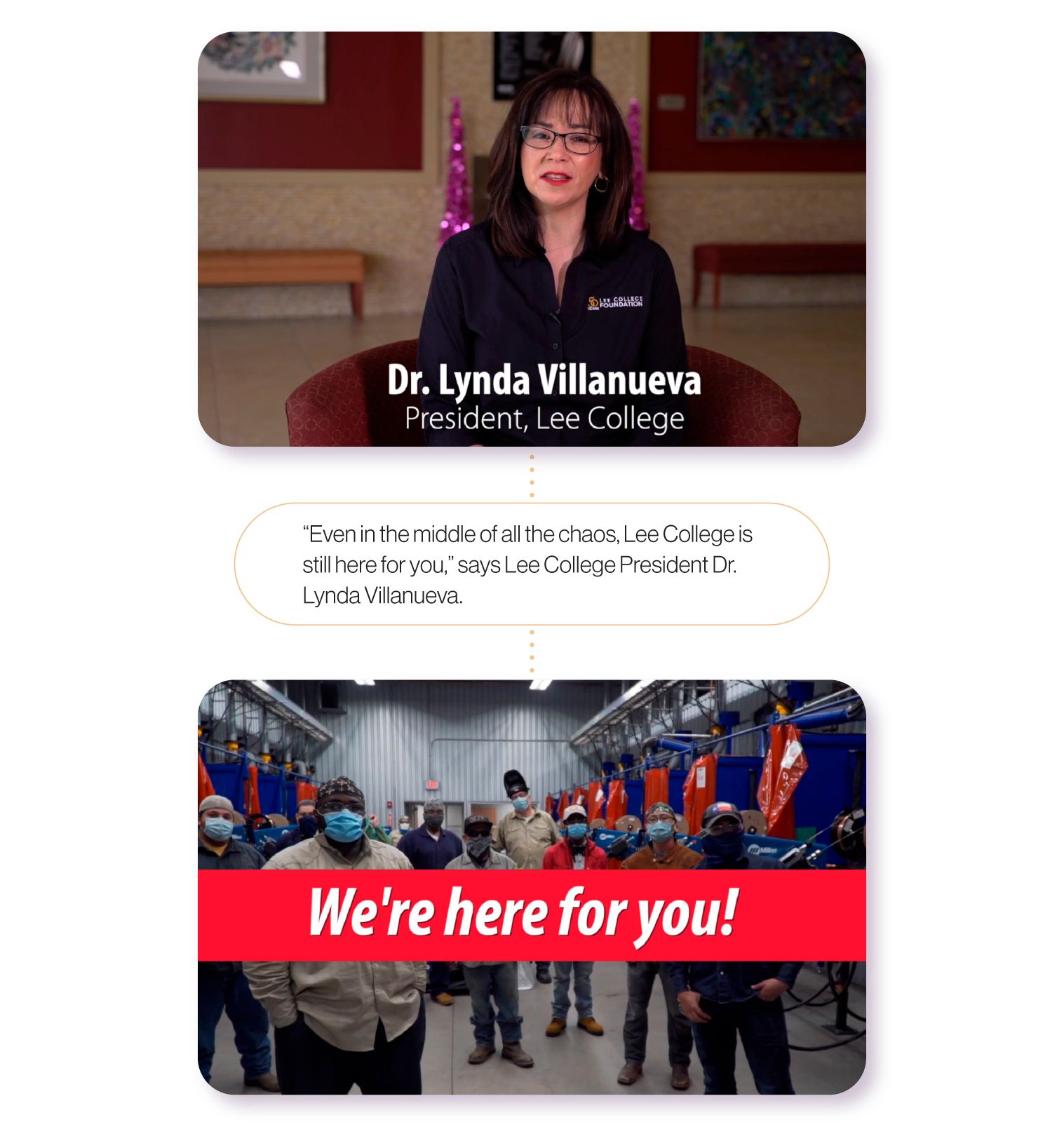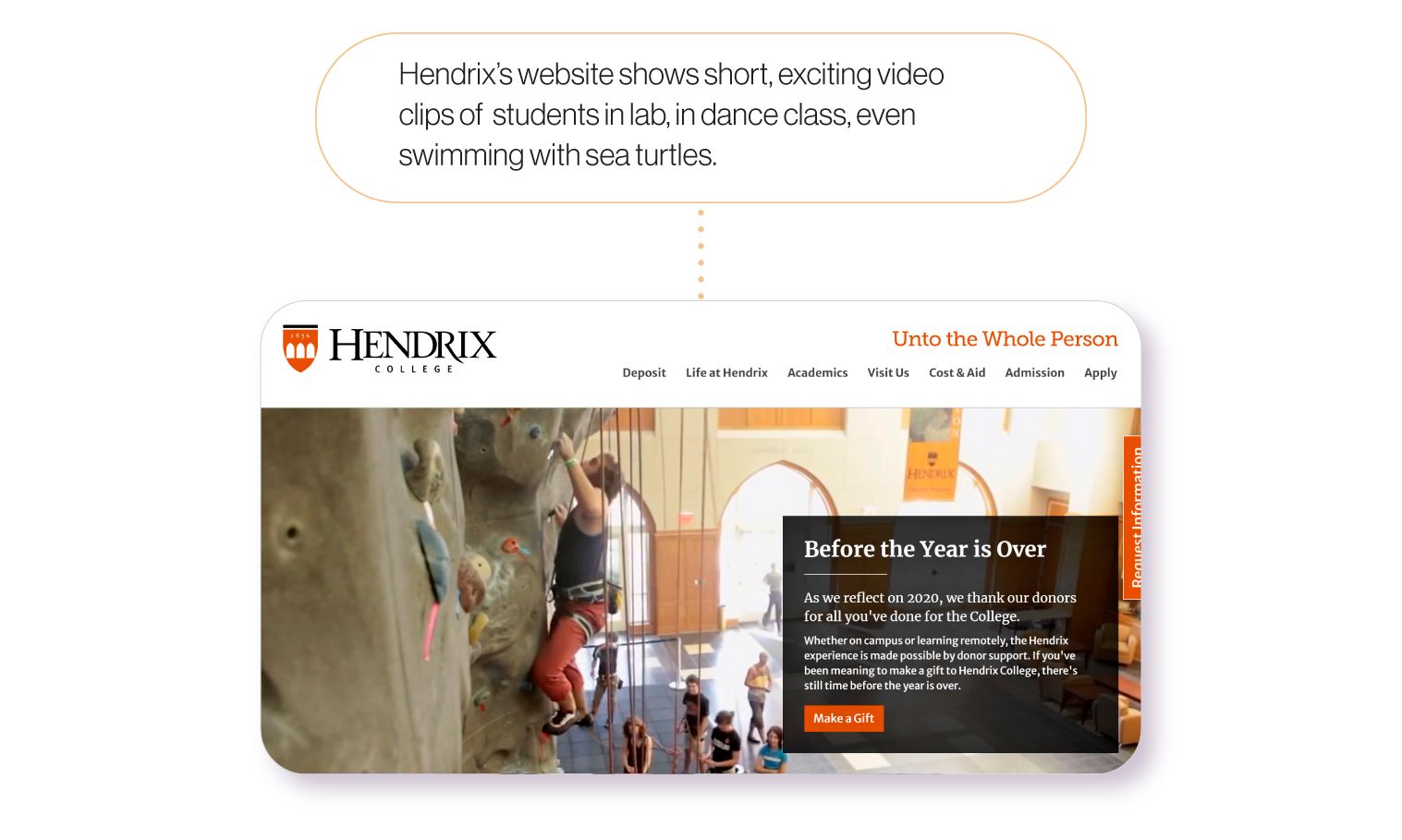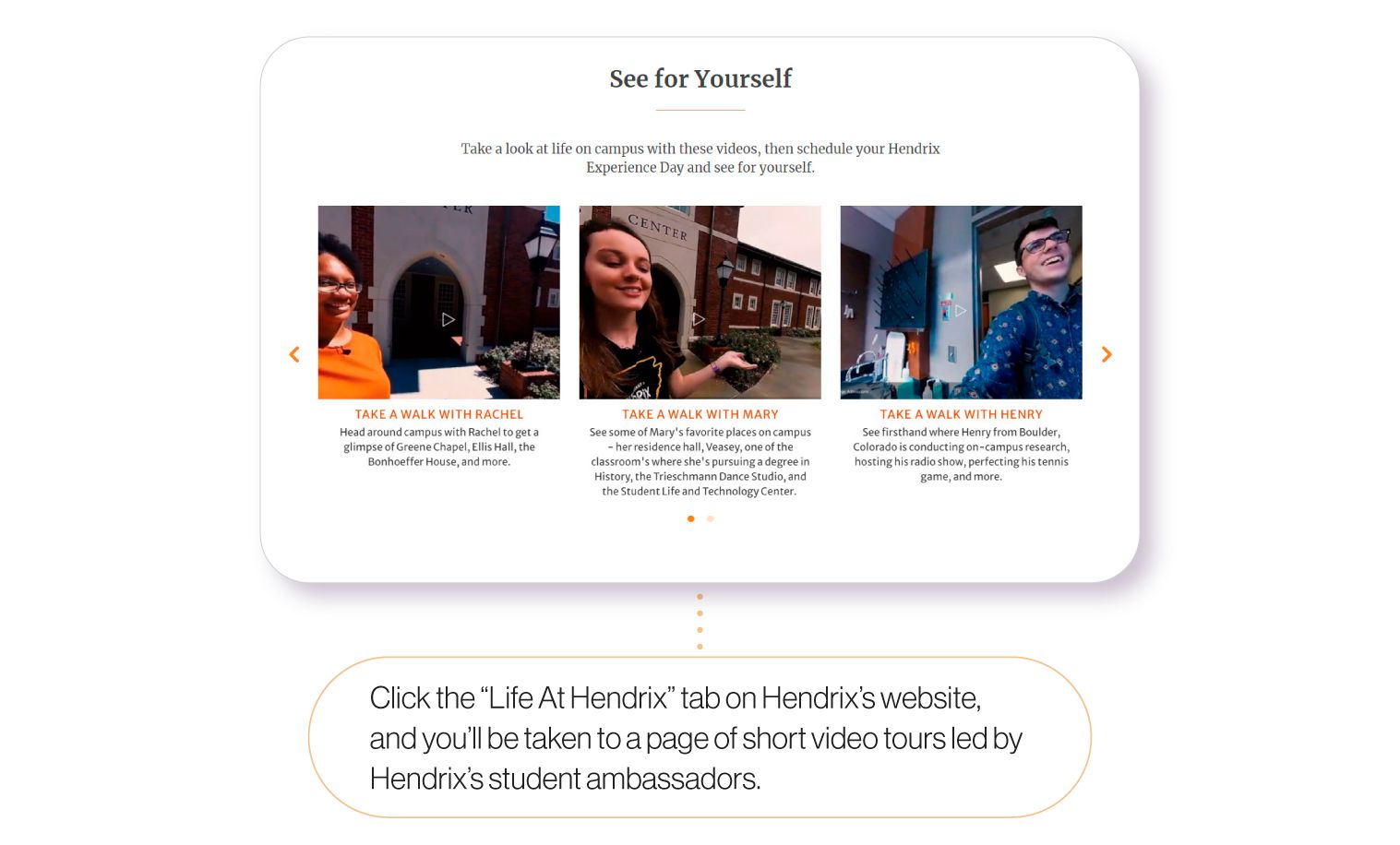How to Boost Student Enrollment
Optimize your student enrollment funnel with tips from higher education.

Across the country, school leaders are grappling with a particularly chilling aspect of COVID-19. Whether students moved to other states, private schools, virtual charter schools, or even back to the safety of their own homes, student enrollment is down in districts nationwide. According to an October 2020 Bellwether Education Partners study, around 3 million students hadn’t interacted with their home districts since March. That’s more than twice the total number of K-12 students in the state of Arizona.
Once restrictions due to COVID-19 are lifted, many students will likely return to their neighborhood schools. However, there will almost certainly be a small percentage who put down roots in their new environments. Because of changes in education due to the pandemic, families across the country have become more aware of their students’ educational options—and more comfortable transferring between them.
For schools that rely on per-pupil funding to survive, the permanent loss of just one or two students will put pressure on the district’s budget. Now more than ever, there’s a financial imperative to make sure that families know about the great things happening in public schools.
While competition for students is relatively new in K-12 public education, neighboring arenas like higher education have been developing competitive enrollment strategies for years. Expert marketers in higher ed spend tens of millions of dollars to help match students with their best fit schools. To do so, they use different versions of a school enrollment funnel, with prospective students at the top and enrolled students at the bottom.
K-12 districts may not have millions at their disposal for marketing, but following the idea of an enrollment funnel can provide us with key strategies for matching students to schools—ones that K-12 school leaders can capitalize on.
What is a Student Enrollment Funnel?
Imagine you’re changing the oil on your car. As you pour new oil in, the liquid glugs through a funnel, narrowing as it passes through the center and into your motor. The concept of a student enrollment funnel is similar. You want to narrow down a large group of prospective families into more seriously interested applicants—and finally into a small group of enrolled families. As they pass through the funnel, interested families should grow more and more excited about your schools. Just be careful that they don’t stop moving due to confusion or frustration. After all, if you don’t set up your funnel correctly, you’ll lose your oil in the process.
Your student enrollment funnel should ultimately show families how they fit into your district. To make the recruiting process stick, you want to build a relationship with each of your prospective families, making sure that you know them and they know you. At each stage, you’ll have different goals for your marketing.
Prospective Families
Your funnel starts with a large group of families: anyone with eligible K-12 students in the area. This group might include homeschool families, families who have been enrolled in private schools or other nearby districts, and families who are moving into the area. Your first goal should be to attract families from these groups, identifying the ones who have shown interest in your schools. These are your leads.
There are many ways prospective families might show their interest—engaging with an ad, following you on social media, or even contacting a district or school directly—so you’ll need to keep track of those interactions accordingly.
Tip #1: Market to your audience’s wants and needs.
In this stage of the funnel, you want to narrow down what families want and need as well as what your district uniquely offers. We’d imagine most families want a free, high-quality education—but they likely have more specific needs as well: innovative STEAM courses, great sports programs, or supportive reading initiatives. As best you can, identify what families specifically want, and brainstorm how to highlight what your district offers.
“When it comes to students who aren’t already in our pipeline, it’s really about examining what is important to those students,” says Dawnica Jackson, Executive Director of Marketing & Public Affairs at Lee College in Texas. “We know who our potential students are. But usually the question that we don’t have the answer to—the most important question in marketing—is why. Why are they making the decisions they’re making? What are we doing right, and what are we doing wrong?”

At Lee College, those questions have led to changes in marketing strategy. “When we did the basic research, we found out that the COVID crisis has made it impossible for a lot of people to go to school from a financial standpoint,” Jackson tells us. But Lee, a community college, is much more affordable than four-year institutions—a point Jackson and her team highlighted in their marketing. The team also addressed concerns about employment in light of COVID-19. “We’ve got a series of commercials in which we are trying to show our compassionate side,” she says. “We’re telling people, We know it’s tough out there. But if you come to us, you’re going to be ready to work on day one because of the quality of the training.”
Just like Lee College, you’ll need to reassess families’ wants and needs each enrollment cycle. While a message of support due to COVID works well now, it (hopefully) won’t be applicable next year.
Tip #2: Provide multiple entrances to your funnel.
Remember that at this phase in the funnel, you’re not trying to get families to enroll just yet; you’re simply trying to pique their interest and to encourage them to engage with you. If all goes well, at the end of this phase, you should have a list of leads: families who might be good candidates for school enrollment.
However, not everyone will respond to the same types of marketing. That’s why you’ll need to diversify your approach, disseminating those marketing messages across all your available channels, from social media ads to print postcards to in-person events. No matter your medium, you should be driving your audience toward some kind of action, whether it’s filling out a form, requesting a campus visit, or simply clicking a Facebook ad. In the private sector, this push toward engagement is called a call to action.
At Hendrix College, a small liberal arts school in Arkansas, the admissions team is jumping on a nationwide trend. “As you start looking at more college websites, you’re going to see more and more that the main page is designed as a recruitment page,” says Ryan Cassell, Vice President of Enrollment and Dean of Admission at Hendrix. The Hendrix homepage is no different. It offers blurbs about the college’s educational philosophy, lists the majors they offer, highlights the beauty of Hendrix’s campus, and shows photos and videos of students and faculty actively engaging with one another. The site is clean and uncluttered. Tabs implore prospective students to “Request Information,” “Visit Us,” and “Apply”—all calls to action.

“On our application, we ask students how they heard about Hendrix, and, many times, they will point to the website,” says Cassell. “That’s why web presence is so important.”
Interested Families
Once you’ve identified your leads, the next step is to get to know them—and to help them get to know you. You’re tying names to faces, building on the interest they’ve already shown in your district, and ultimately carving out a nook in your schools for each family.
Tip #3: Prioritize relationships.
In higher education, admissions counselors can make or break a university’s student enrollment. That’s because personal connections matter.
“One theme we talk about a lot is the idea of Hendrix being a home, and us being a family—and that’s built on relationships,” says Cassell. To drive that idea home, the Hendrix recruitment team has sent out more than 3,300 handwritten notes to prospective students: birthday cards, invitations to visit campus, responses to college essays, and more. They even find out students’ favorite candies on the sly and then send some to their homes. “That’s something that’s really important to me, because that’s the true experience,” he tells us. “This is a place where you are known, where you are cared for—and those relationships outside the classroom and that mentorship is just as valuable as the in-class learning.”
Tip #4: Help families envision life at your schools.
Once you’ve developed genuine relationships with your leads, it’s crucial to allow students and parents to see your district for themselves. At this point in the process, Cassell says, “They can start to see themselves here more. If you ask a lot of students how they chose the colleges they did, I think you’ll find most will report that the fit was just there. They felt like they belonged at that school when they arrived on campus.”
In the wake of COVID-19, physical visits may not be an option for your schools for a while—but you can still bring families onto campus virtually. In modifying their traditional campus visits to accommodate for social distancing, Hendrix has introduced virtual one-on-ones, inviting prospective students to chat over Zoom with faculty members who teach their favorite subjects. On their website, they share videos of students giving tours of campus. These and other virtual recruitment tools have turned out to be pretty successful. “We have had dozens, probably hundreds, of virtual one-on-ones with students,” says Cassell. As of this writing, the college is 30% ahead of last year’s application benchmark.
The importance of the campus visit isn’t the physical space itself. It’s about filling in the blanks in your prospective student’s imagination, giving them a firsthand feel for your school’s personality and culture.

Families Planning to Enroll
One of the last stages in your funnel is enrollment. While many families will take months to fall through the funnel, asking questions and requesting tours, others won’t be as interactive. They’ll enroll seemingly out of the blue. But whether you’ve been courting families for months or are just noticing a downloaded enrollment form, families are still going through the funnel. You need to ensure that the student enrollment process is a reflection of your district because it might be families’ first impression of your schools.
Tip #5: Remove obstacles.
If you want families to seal the deal and enroll, you need to make the process as easy on them as possible. This means flattening any speed bumps in the path to enrollment—and making sure all those needs you promised to fulfill in your marketing are actually met.
At Hendrix, admissions staff started to question an integral piece of their admissions process: SAT and ACT scores. While test scores seem like a non-negotiable piece of college applications, they really make admissions’ jobs easier, not students’. “We are test score optional now,” says Cassell. “We know those scores tell a lot, but not everything, and now many students can’t even take the test because of COVID.” Hendrix also took some of the inconvenience out of score reporting. If students do choose to report their test scores, they can self-report with a PDF rather than pay for an official score report from the ACT or College Board. “That way, we’ve saved that student the hassle and a handful of dollars in the process,” he tells us.
Of course, public schools aren’t dealing with enrollment roadblocks like ACT scores, but there are other challenges: clunky enrollment forms hidden on your website, forms that aren’t mobile-friendly, maybe even an unanswered question that stops the process in its tracks. As you examine your district’s enrollment process, ask yourself: Could my least tech-savvy relative find, fill out, and submit this application in less than ten minutes?
We recommend taking a long look at your application. What can you remove or save for another meeting? Remember, the goal is a simple, seamless experience. You don’t want families to fall out of your funnel at the most important stage.
New Students
After students enroll, you might assume that they’ve fallen through your funnel. But that’s not quite the case. Once families have joined your schools, you have to keep them there—and you know better than we do that retention takes just as much work.
Tip #6: Don’t drop the ball after students enroll.
Ultimately, the student enrollment funnel is somewhat of a stand-in for relationship-building. As families move through each rung in your funnel, you’ll probably get to know them—their likes and their needs. But just like you have to maintain friendships with check-ins, birthday cards, and lunch dates, you also need to make sure that families continue to feel known, cared for, and supported in your schools.
Retention is similar to recruitment; it goes back to trust. “When you show genuine interest and pay attention to the questions students are asking and respond in thoughtful ways; when you are grading their papers and taking time to not just show them what they did wrong but how they can correct it—you develop trust,” says Jackson. That trust is what will keep them in your district.
One student at Lee College, Jackson shares, couldn’t have completed school during the pandemic without the college’s help. After learning that he was in crisis, Lee paid for some of his essential needs, allowing him to continue his education. Now, he has graduated and is on his way to becoming a teacher. “When you do those kinds of things, when you show the students that you care, they know it’s not about them just being a number,” Jackson says. “It’s about helping them achieve their dreams.”
It’s these students and families who become advocates for your district, who encourage prospective families to take a leap of faith and raise their hands to learn more.

SchoolCEO is free for K-12 school leaders. Subscribe below to stay connected with us!

